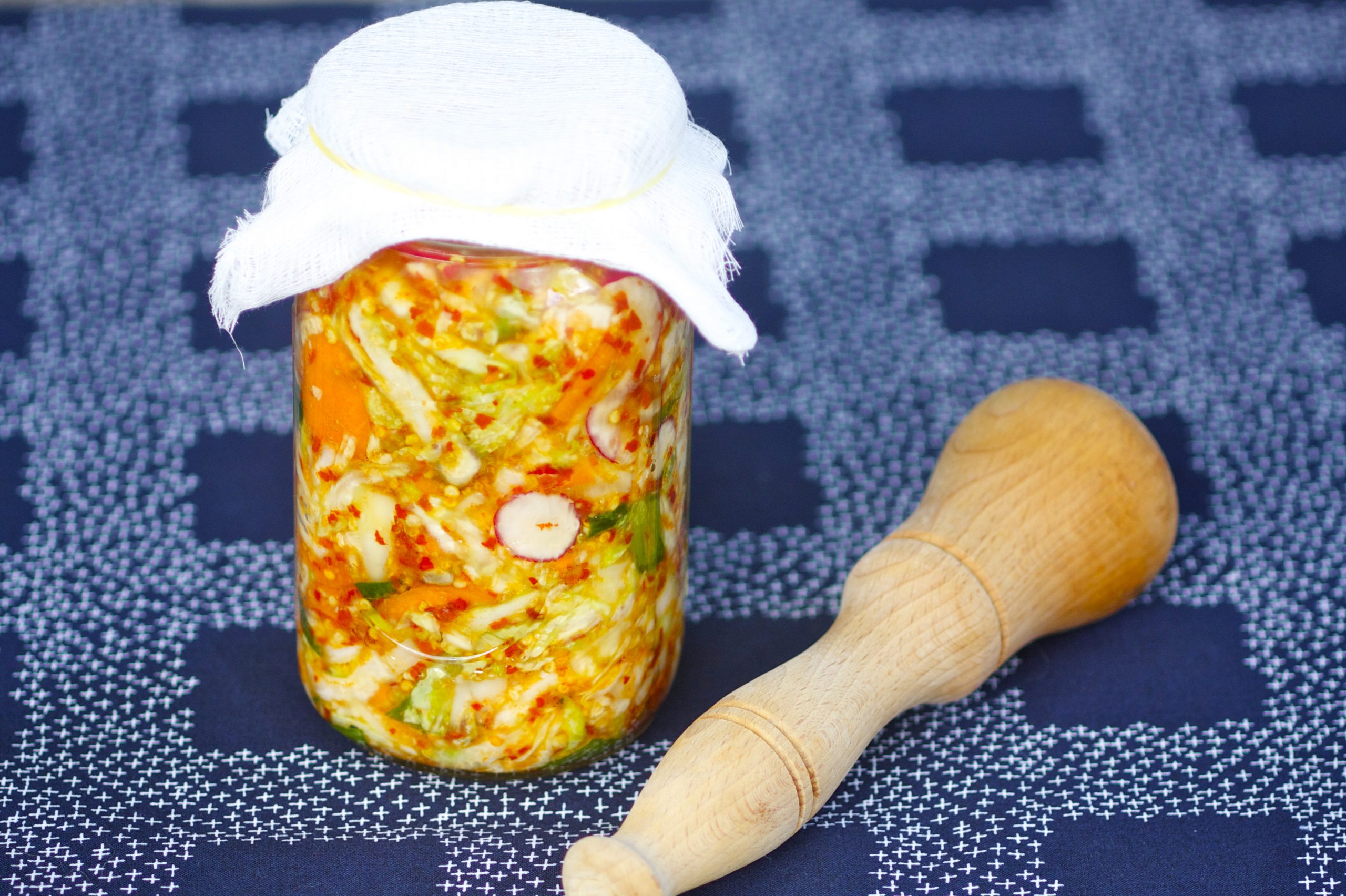By now you’ve probably heard that gut health is an important part of the overall picture of what it means to live in a healthy, disease-free body. With more research coming out every day, we’re just scratching the surface in terms of what we know about the depth and complexity of the gut biome. What we do know is that it’s important to build up the healthy bacteria in your gut. And today’s recipe will help you do just that!
Most people see the word ‘bacteria’ and run. We’ve been taught that bacteria is bad and that we should kill it, sanitize it, and get rid of it at all cost. But, hold onto your horses – healthy bacteria is a completely different story! And having a healthy gut biome is key to vibrant health.
According to Dr. Mark Hyman, “Optimal gut health has become a prominent focus in 21st century health. Having too many bad critters hanging out in the gut has been linked to numerous problems – including autism, obesity, diabetes, allergies, autoimmunity, depression, cancer, heart disease, fibromyalgia, eczema, and asthma. The links between chronic illness and an imbalanced microbiome (or gut bacteria) keep growing every day.”
There are many ways you can improve your gut health, which will also promote a stronger immune system since so much of the immune system is actually found in the gut.
- Take a high quality probiotic
- Eat cruciferous veggies like kale, cabbage, broccoli, cauliflower, and bok choy
- Incorporate fermented veggies into your diet
You’ve probably seen fermented veggies in the grocery store. We’re lucky to have so many amazing options these days. We love Ozuké and Farmhouse Culture, but today we want to show you how you can DIY fermented veggies at home and take part in one of the oldest forms of preserving food.
Fermenting your veggies causes them to go through a process called lacto-fermentation. The “lacto” portion of the term refers to a specific species of bacteria, namely lactobacillus. These little guys are alive and found on plants, surfaces, and are common bacteria that reside in our bodies. They do no harm, but lots of good!
Lacto-fermentation also increases and “preserves” the vitamin and enzyme levels in the veggies, as well as improves the digestibility of the fermented food. Lactobacillus organisms are heavily researched for substances that may contribute to overall good health.
The recipe below is a version of the traditional Kimchi that is a staple in Korean culture, minus the fish sauce.
We love Kimchi on salads and with grain dishes, and try to have a little bit every day to make sure we’re building up our healthy gut bacteria.
If this is your first time naturally fermenting veggies, take heart – this is an easy recipe to begin with. For additional information we find this website really helpful!
Before you know it you’ll be lining your countertops with jars full of ferments!
Are you a fan of fermented foods? What benefits have you experienced? Be sure to share with us in the comments below.
With love & friendly bacteria,
Vegan “Kimchi”
Yield: 4 cups
Ingredients:
- 1 medium head cabbage (we prefer green cabbage)
- 5 carrots, peeled and grated
- 6 radish, grated
- 3 hakurei turnips, grated
- ½ cup scallions, sliced
- 3 inch knob of ginger, peeled and coarsely chopped
- 8 cloves garlic, peeled
- 2 ½ tsp. sea salt
- ⅛ cup dried crushed red chile flakes (depending on your spice level)
Instructions:
Quarter and core cabbage, then shred into 1-inch strips. Place in a large bowl and add carrots, radishes, scallions, and salt. Toss to combine and set aside.
In a food processor fitted with the S-blade place ginger, garlic, and chili flakes. Process until finely ground. Scrape sides and blend again. Add to bowl of vegetables and use your hands to mix thoroughly. Continue mixing and massaging vegetables for a few minutes until they become juicy and start to soften.
Using two wide-mouth jars, add a handful of vegetables to each and pound down firmly with your fist or a muddler to release any air pockets. Repeat with remaining vegetables, a handful at a time, then divide any remaining liquid from the bowl between jars.
The surface should be covered with liquid. If it isn’t push the vegetables down until liquid rises. Press any pieces of cabbage down from the sides of the jars so they are submerged as well. Next, fill two smaller jars or bottles with water and place them on the surface of the vegetables as a weight to keep them below the liquid.
Cover with cheesecloth to keep any particles out. Place in a well-ventilated, cool area. Ferment for five to seven days or for up to ten days or longer.
After five days taste the kimchi and then again every day until the flavor is to your liking. To store, cover the jars with a lid and store in the fridge. It will keep for months, and the flavor will continue to develop and strengthen. Don’t worry if the veggies soften it is all just part of the process.







I just made the kimchi this morning and it already looks and tastes fabulous. Can’t wait to see how this does over the next few days!
Hi Brownie, Yay! We’re so glad! Please write back in and let us know how the finished product is. XO, J&J